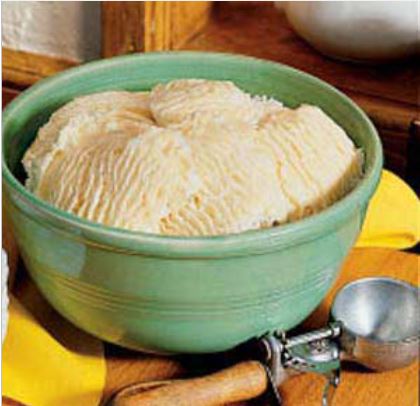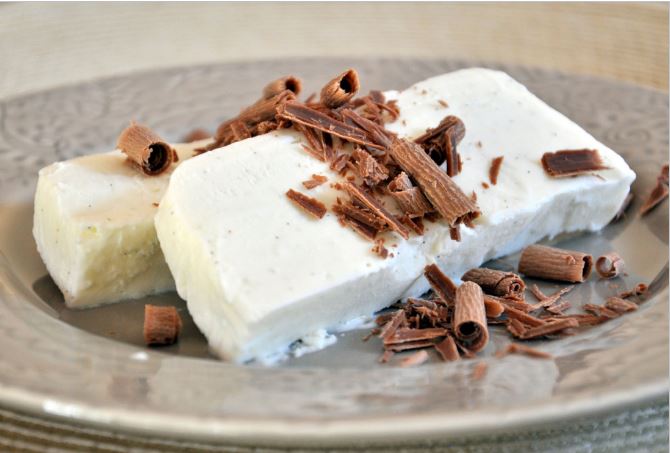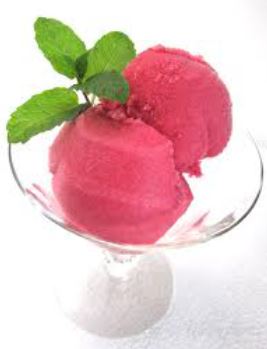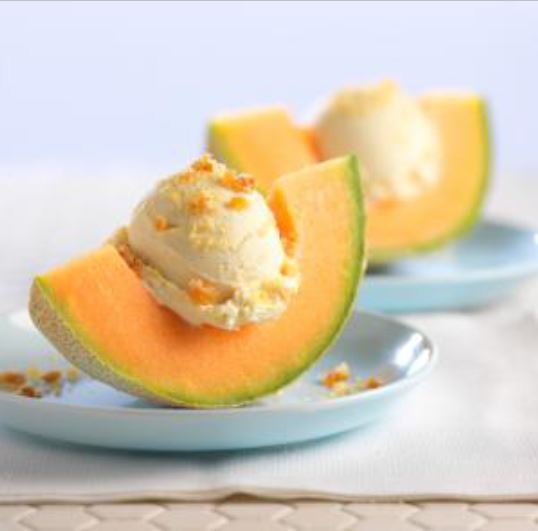A Primer on FROZEN Desserts

Hot weather’s coming and that means we’ll be wanting foods, especially desserts, that are on the cool side (temperature, that is). That said, have you ever thought about all the frozen dessert choices out there? What do we usually turn to? Ice cream first and foremost, with sherbet and gelato next on the list. But there are several other choices. Take a look at this primer on types of frozen desserts I found in a 2013 issue of Mother Earth News.
The article’s author suggested we think about frozen desserts in family groups: those with dairy, those with something else, and those completely solo. Here is how it’s broken down:
Ice Cream. Cream (and sometimes milk) is mixed with sugar, then frozen while being churned to incorporate enough air to make it fluffy. Ice cream is the perfect cold, creamy and smooth counterpart to warm desserts, such as cobbler and pie.
Ice Milk. Made with less cream than ice cream, ice milk includes more additives to improve its texture. The result has fewer calories, but where there is less cream, there is also less creaminess — the texture is definitely not as smooth.

Frozen Custard. Ice cream made with eggs is referred to as frozen custard or French-style ice cream. The custard must be cooked first to denature the egg proteins and disperse them throughout the mixture. The cooked custard lends a rich, eggy flavor to the finished result. Frozen custard is a thick, satisfying dessert all on its own. Topping with seasonal fruit or a simple sauce will add a delightful twist to your custard.
Gelato. Though gelato seems richer than ice cream, it has less butterfat. Gelato recipes call for whole milk rather than cream. Gelato’s density comes from slow churning without whipping in much air. You can do this manually with a regular ice cream maker by churning more slowly, or opt for a gelato-making machine. Gelato is usually served slightly warmer than ice cream.

Semifreddo. Ice cream or gelato combines with whipped cream and sometimes meringue in this Italian treat. The “half cold” or “semifreddo” result is something like frozen mousse. Semifreddo is served in slices like cake. The marshmallowy texture of a well-made semifreddo is divine.
Sherbet. The creaminess of sherbet is achieved by mixing a little bit of milk or cream with sorbet. Make sherbet when you have delectable seasonal fruit, but you want the softness of ice cream. Try the recipe at the end of this article for a melon sherbet.

Ice. An ice is usually a simple frozen fruit purée that is not finely textured. Ices are always nice on a hot day. Try making them with vegetable purées, too — frozen puréed cucumber is refreshing.
Granita. This sorbet with larger ice crystals is simply frozen, without much stirring and without a special machine. Scrape it up with a fork a few times during freezing. The resulting texture is similar to shaved ice. Granita recipes often call for alcohol, coffee, tea or other beverages.

A summertime tradition at our house is to fill quarters of fresh cantaloupe with big scoops of vanilla ice cream. But since learning about all the other choices of frozen desserts, we’ll likely shake things up a bit by substituting some frozen custard or semifreddo this summer! (I’ll always opt for anything using cream.)
- www.vanishedamericana.com
- www.tasteofhome.com
- www.tasteofhome.com
- www.lcscoop.squarespace.com
- www.californiacantaloupes.com
 Alice Osborne
Alice Osborne
Weekly Newsletter Contributor since 2006
Email the author! alice@dvo.com
